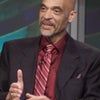
In the space of a few days Baltimore Police Lieutenant Brian Rice is scheduled for trial in the death of Freddie Gray, the Justice Department announced that it will conduct a probe into the police shooting of Alton Sterling in Baton Rouge, La. and one has been called for in the shooting of Philando Castile in a St. Paul, Minnesota suburb. Three cities, three deaths, three instances where police officers are on the hot seat. The odds are that Rice, just like the three other Baltimore officers who were acquitted in the Gray case, and the officers involved in the slaying of Sterling and Castile, won't have to worry about a conviction or indictment.
Here's why. The victims, Gray, Sterling and Castile, as in a disproportionate number of other cases of police slayings, are young African-Americans or Hispanics.
It's an uphill battle for prosecutors to overcome both pro-police attitudes and negative racial stereotypes. Stanford University researchers recently found that even when many whites are presented with evidence that the criminal justice system is loaded with racial bias toward blacks they are more likely to support tough, draconian laws such as three strikes, tough sentencing and increased incarceration. The galling conclusion of the researchers was that informing many whites that African-Americans are significantly over-represented in the prison population "may actually bolster support for the very policies that perpetuate the inequality."
The negative perceptions of blacks, especially black males, by much of the public are not the only problem in effecting effective legal measures against police violence. There is no ironclad standard of what is or isn't an acceptable use of force in police misconduct cases. It often comes down to a judgment call by the officer. In the Rodney King beating case in 1992 in which four LAPD officers stood trial, defense attorneys painted King as the aggressor and claimed that the level of force used against him was justified. This pattern has been evident in a number of celebrated cases since then. It's made even easier to sell the notion that somehow the victims bare culpability for their deaths by dragging in their past: Gray for drug dealing and Sterling for several felony arrests and a prison stint. Police then claim that they feared for their lives in confronting them and they use deadly force solely in self-defense. If brought to trial judges and juries routinely buy this line and acquit.
The police agencies that are on the hot seat for a dubious shooting or another act that results in the death of a civilian investigate themselves. There is almost never an independent, outside agency that will conduct a truly impartial investigation. In the rare cases that a case is bound over to a prosecutor to determine charges, the prosecutors rely heavily on the police report on why and how the officer used deadly force. Those reports are, of course, compiled, written and carefully vetted by police investigators and officials. In nearly all cases, if there is a prosecution, the officer will be charged with lesser offenses, or in some cases overcharged, which clouds the evidence and testimony. Police unions quickly step in and retain top gun defense attorneys, with lots of experience defending police officers accused of misconduct. Police unions bankroll their defense and spare no expense. Cops rarely serve any pre-trial jail time, and are released on ridiculously low bail.
If the cops are tried by a jury, police defense attorneys seek to get as many middle-class people, whites and even blacks and Latinos, on the jury as possible. The presumption is that they are much more likely to believe the testimony of police and prosecution witnesses than black witnesses, defendants, or even the victims.
The code of silence is another powerful obstacle to convicting bad cops. Officers hide behind it and refuse to testify against other officers, or tailor their testimony to put the officer's action in the best possible light.
Prosecutors often are barred from using statements made during internal investigations of officer misconduct in court proceedings on grounds of self-incrimination. This knocks out another potentially crucial prosecution weapon.
Then there are the judges. The Baltimore police defendants chose to take their chances with a judge, rather than a jury. It was a good, relatively safe call. Studies on judicial bias, both overt and implicit, have found the bench anything but impartial. Judges make decisions on bail, pretrial motions, evidentiary issues, witness credibility, and jury selection, and instructions to the jury.
Judges also can and do weigh the status of the defendant in the community, and the support that he or she gets from notables. In the case of police officers who appear in court, they face judges who in many cases they have faced often as police officers testifying in criminal cases, they are known quantities. They also have a phalanx of family members and police supporters standing solidly with them in court. They are anything but the average run of the mill common criminal, and judges are well aware of that.
Three officers in Baltimore walked in the Gray case. Whether there will be any charges against the Baton Rouge officers involved in the Sterling and Castile slayings is problematic at best. This tells much as to why cops repeatedly walk free in dubious deadly force cases.
Earl Ofari Hutchinson is an author and political analyst. He is the author of Let's Stop Denying Made in America Terrorism, (Amazon Kindle) He is an associate editor of New America Media. He is a weekly co-host of the Al Sharpton Show on Radio One. He is the host of the weekly Hutchinson Report on KPFK 90.7 FM Los Angeles and the Pacifica Network.
